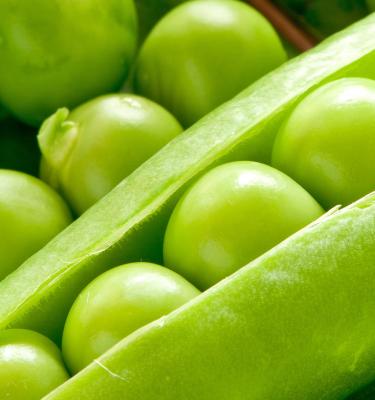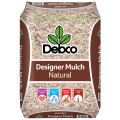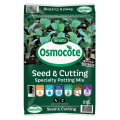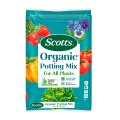

The Ultimate Guide to Growing Peas
Nothing beats home-grown peas for their tenderness and taste. That's because when they’re picked, their sugars start to turn to starch and so they quickly lose their sweetness and flavour. Pick your peas when small, steam them within an hour of picking with a sprig of mint, and you won't taste better.
Luckily for the culinary amongst us, peas are an easy crop to grow at home. While different areas of the country require different growing approaches, the sheer variety of peas means it’s easy to find a type suited to your climate. Peas thrive in sunny gardens in well-draining soil, and because they can be grown vertically, they are great for growing in pots, on balconies or in small gardens.
So, whether you're growing sugar snap peas in the garden or want to grow snow peas in pots, we’ve got you covered with this guide.
Pea varieties
There are lots of different types of peas and numerous varieties. As with most home-grown vegetables, there's a selection of varieties from early to late season, so take a little time to choose which ones will suit you best.
Sugar snap peas and snow peas are eaten pods and all, picked before the peas have fully developed. Both are generally easier to grow than garden peas and are definitely worth trying if you've had problems with normal peas in the past.
- Early: Earlicrop Massey
- Main crop: Greenfeast, Telephone Pole
- Snow peas: Oregon Giant, Oregon Sugar
- Sugar snap peas: Sugar Snap Peas, Cascadia

When to grow peas in Australia
If you are planting straight into the ground, do so in early to mid-spring, making sure the soil is warm and the seedlings are well protected from cold and frost. Seeds will rot if you sow into cold soil.
For an even earlier start, sow the seeds in small pots or seed trays filled with seed raising mix and kept in a warm, sunny spot until they have sprouted. Plant out when the soil has warmed.
How to grow peas in the garden
1. Pick a good spot for planting peas
Peas need a sunny position that is sheltered from strong winds, to ensure insects can pollinate the flowers. Your peas are going to need moisture-retaining and nutrient-rich soil and if you’ve gone for a taller variety, will need support, so make sure there’s plenty of room for that. A lush, leafy vine of peas growing vertically up a trellis or support makes for a great garden display!
2. Prepare the soil for growing peas
Before you’re ready to sow, make sure you dig and prepare the ground, adding plenty of compost or well-rotted manure well in advance. The quality of your soil is critical for the health of your pea plant so use a quality potting mix and add garden compost to help keep the soil moist, but free draining. Peas, being legumes, prefer an alkaline to neutral soil (pH7 or higher), so if needed, add lime to acidic soils in late winter.
Peas need plenty of soil moisture, especially at flowering and when the pods are filling, otherwise the crops are poor, and the peas are small, dry and tasteless. To ensure they don't go short of water, dig a trench approximately 30cm deep in early spring and add a 15cm layer of compost and soil improver to retain moisture. Fill the trench with soil a fortnight before sowing or planting out.
3. Sowing peas
Start sowing in early September, providing the soil is warm enough.
For an earlier start, sow the seeds into seed trays and leave them in a warm, sunny position until germination.
In the garden, the easiest way to sow is to dig out a flat-bottomed trench 5cm deep and 20-25cm wide. Lightly fork over the bottom of the trench, water the soil and then sow the seeds evenly, 7.5cm apart, pressing them lightly into the soil. Fill the trench with soil and lightly firm down. Sow rows at fortnightly intervals to give a succession of crops throughout summer. By growing different varieties and sowing at different times of the year, you can pick fresh peas from December to February.
4. Water, mulch, and feed weekly
Water well during dry periods, especially during flowering and pod set, giving the soil a good soaking once or twice a week. Mulch the soil around the plants to preserve soil moisture. You can also feed weekly with a high potash liquid feed to promote bigger crops.
5. Harvest your peas and enjoy!
As the plant starts to mature, keep an eye on your peas, as the earlier they’re picked the sweeter they'll be. Don't rest on your laurels though; harvest regularly to encourage your plants to keep on producing.
Start from the bottom of the plant where the peas mature first and work your way up. Although you can freeze peas, they really are at their tastiest eaten straightaway.
How to support peas
Apart from dwarf bush varieties, peas need support for the plants to grow up. Create bamboo cane tee-pees or tripods around the plants when they're 7.5-l0 cm high. Pea netting supported by stout canes is another option, but it can be difficult to untangle the plants at the end of the growing season. Chicken wire or sturdy wire mesh (‘reo’) are better options. Lightweight wooden trellis panels are attractive alternatives, especially when growing peas as an ornamental feature.
A few facts about peas
- Round, smoother pea seeds are hardier than wrinkled ones, which tend to be better for sweetness.
- They've been around a long, long time! So long in fact peas were discovered in Egyptian tombs.
- Pea plant tendrils are edible.
- One serving of peas contains as much vitamin C as two large apples and more fibre than a slice of wholemeal bread.
Common pea pests and diseases that affect peas
Powdery mildew
Powdery mildew is a fungal disease that appears as a white mildew on pea plants, stunting growth and causing leaves to shrivel. Drought-stressed plants are more susceptible to this disease.
- Dig organic material into the soil before planting to improve soil water retention
- Space plants when planting to ensure good air circulation
- Remove any affected growth promptly
- Water regularly in dry periods
FAQs
Why are my peas not flowering?
There are a few reasons why your peas may not be flowering, including not enough light or too warm temperatures. A common cause is too much nitrogen in fertiliser, which can cause the plant to produce lots of leafy growth but no flowers. Test your soil and switch to a low-nitrogen fertiliser if needed.
Where is the best place to plant peas?
The best place to plant peas is a sunny well-draining position protected from wind. Peas can be grown in the ground or in pots.
When should you plant peas?
The best time to peas varies by climate zones.
For Temperate Regions such as Sydney, Victoria, Tasmania and most of South Australia, sow seeds in late autumn to early winter (April to June) to grow through winter and flower in early spring.
For Subtropical Regions such as the Queensland coast, planting is best in late autumn to early winter (April to June).
And for Tropical Regions like far north Queensland, sow peas during the dry season, typically between May and July.
How can I support my peas?
Support taller pea plant varieties with bamboo cane teepees, tripods, wooden trellises, or pea netting supported by stout canes. Chicken wire or sturdy wire mesh (‘reo’) are also good options.
How tall do pea plants get?
The height of a pea plant depends on the variety, but climbing pea plants can grow up to 2 metres tall and will need support to grow.
How much sun do peas need?
Peas need at least six hours of sunlight a day.
How long to grow peas?
The time from planting to harvest for peas in Australia typically ranges from 60 to 70 days, depending on the variety and growing conditions. Regular harvesting encourages continued production.



